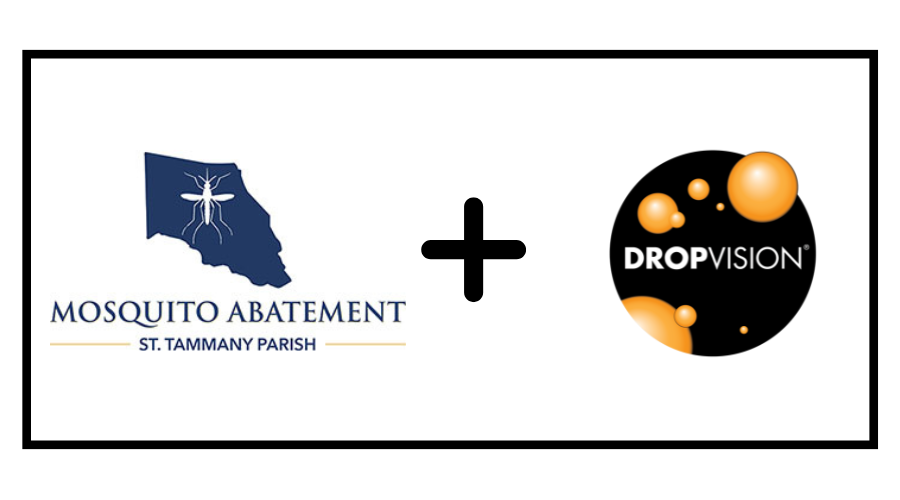
St. Tammany utilizes 14 ground ULV spray units and two airplanes in its mosquito control operations. Depending on the season, adulticiding can begin in March and continue through December. Since temperatures can vary, it is very important that the droplet size & density be monitored throughout the year. At best, this is an extremely time consuming, eye straining and brain exhausting process. In the 70’s, even the mathematical computations had to be done on a calculator. Needless to say, when DropVision® came along, we jumped at the opportunity to try it!
Our first tests were conducted on our 14 ULV spray units. These include 2 Lecos, 7 London Fogs, 2 Phoenix spray units & 4 homemade units, all of which are equipped with the Phoenix spray head. Teflon coated slides (1”x3”) were place on a pendulum swing arm located 4’ from the spray head. The unit was turned on and the slide was passed through the spray. The slide was taken to the lab, placed on the microscopes’ mechanical stage and DropVision® electronically captured images of the slide. In this process, each droplet is analyzed and all background objects, coalesced droplet and nonqualified droplets are eliminated.
DropVision® provides current label language requirement standards, incorporating DV.1, DV.5 and DV.9, droplet densities per millimeter squared and relative span.
We were able to test all 14 units in 1 ½ days. Normally, it would take us nearly a week to do the same tests. One of the first things we realized was that we could test 3 different spray pressures on each unit, read the droplets with DropVision® and choose the optimum pressure for each unit. Prior to DropVision®, we would test 1 pressure, read the droplets and determine the MMD. If the droplets weren’t within the proper range, we would go out, change the pressure and start all over again.
For our aerial operations, we have an Aztec PA 23-250 equipped with nineteen 80067 Tee jet nozzles, and a BN 2-T Islander equipped with eighteen 80067 nozzles. Both planes are equipped with ADAPCO’s Wingman GX Spray Management System which uses SkyTracker software. To calibrate the planes, 5 stakes are set out 50’ apart perpendicular to the spray path. Teflon coated slides (1”x3”) are placed on John Hock spinners at each of the stakes. The plane is flown 40-50 over the spinners, which are left on for 8 minutes after the flight.
Last year the MMD was manually determined to be 29.2 microns for the Aztec and 30.7 microns for the Islander. This year, using DropVision®, the MMD was 29.29 microns for the Aztec and 32.49 microns for the Islander. This year, with the help of DropVision®, we hope to ground truth and confirm the model utilized in the Wingman Management System and confirm the 1000’ swath width that we use in our aerial operations. We plan to conduct tests on both planes using Dibrom that we presently use as well as Duet. We also would like to try to determine how temperature inversions affect our spray operations at different times during the day.
Thus far, we have conducted three such tests. For these tests, a row of eleven slide impingers, spaced 200’ apart was set in the direction of the wind in an open area of the Slidell airport. Again, two 1”x3” Teflon coated slides were placed at each stake. The Aztec was flown perpendicular to the row of slides. The offset of the spray line was determined by the model based on real time weather at 200’. The temperature at ground level and 100’ was also determined. The spray was turned on 3000’ before and after the row of impingers. The impingers were activated for 30 minutes after the spray flight. A set of impingers was also placed in the field prior to the spray flight and served as a control. A total of 24 slides had to be read for each of these tests.
Prior to DropVision®, this was a daunting task, which took days. With DropVision®, it took only a couple of hours to read all the slides for each test. Unfortunately, thus far, rotating winds have made it difficult to come up with any definitive answers. However, with the use of DropVision®, we feel we can conduct many such tests and still maintain the sanity of the one in charge of droplet analysis!
Contributed and written by Viki Taylor, St. Tammany Parish Mosquito Abatement District, July 2010